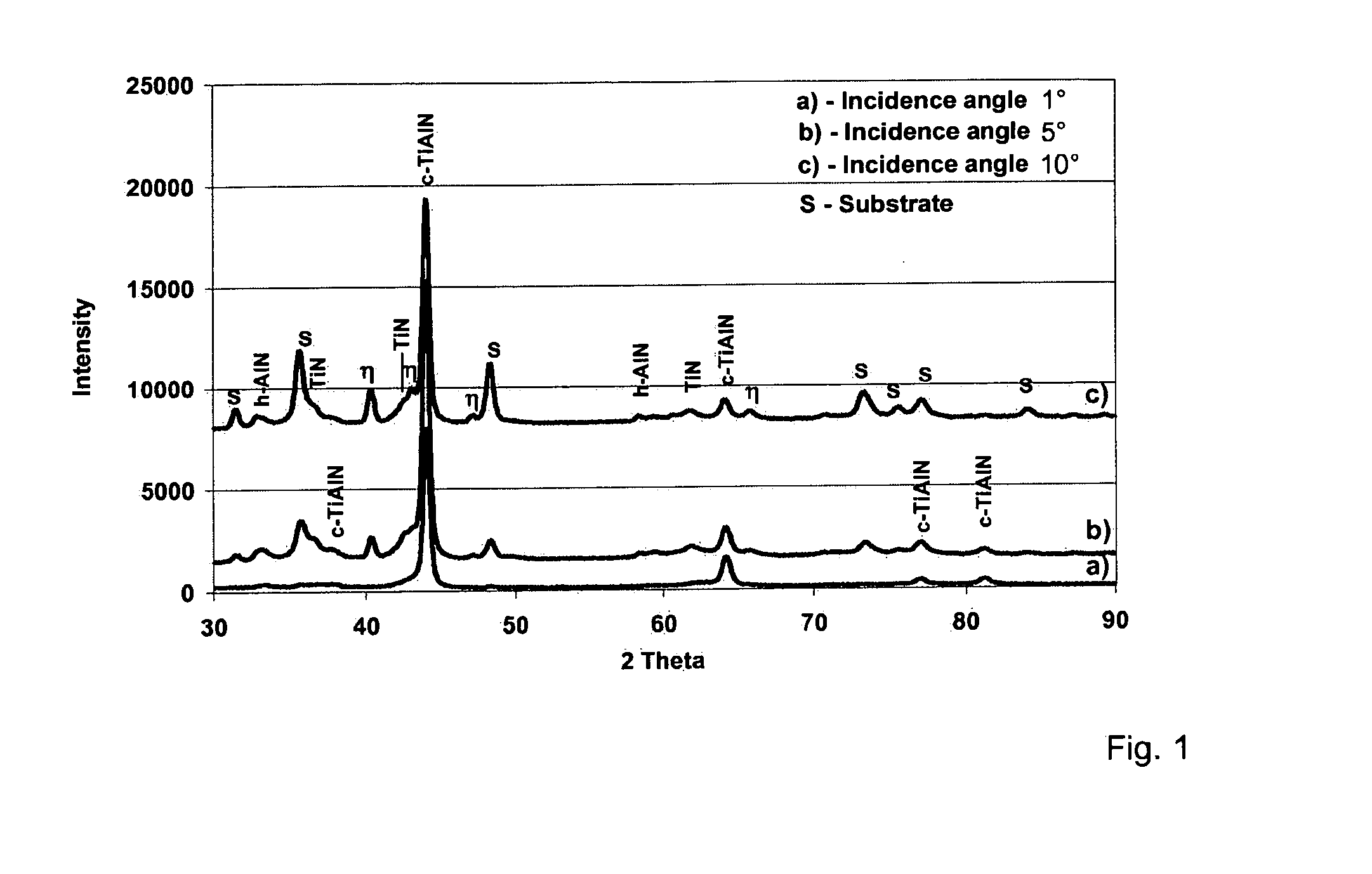Bodies coated with a hard material and method for the production thereof
a hard material and body technology, applied in the direction of superimposed coating process, chemical vapor deposition coating, coating, etc., can solve the problems of insufficient homogeneity of the layer composition, complex process, and high cost, and achieve good adaptation of different layer properties, high adhesion strength, and advantageous effect on friction-wear behavior
- Summary
- Abstract
- Description
- Claims
- Application Information
AI Technical Summary
Benefits of technology
Problems solved by technology
Method used
Image
Examples
Embodiment Construction
[0030]In the following, the invention will be explained in greater detail using an exemplary embodiment and the related FIG. 1, which shows an X-ray diffractogram.
[0031]The layer system according to the invention is applied to WC / Co hard metal cutting inserts, by means of CVD, in three process steps. In the first step, deposition of a high-temperature TiN layer corresponding to the state of the art takes place by means of thermal CVD. For this purpose, a gas mixture of 14 ml / min TiCl4, 3000 ml / min H2, and 300 ml / min N2 is introduced at a temperature of 920° C. and a pressure of 9 kPa. After a coating time of 60 min, a TiN bonding layer having a thickness of 1 μm is obtained.
[0032]In the second process step, the phase-gradient layer is produced. The pressure is reduced to 0.5 kPa and the gas flows for deposition of the gradient layer are set. Feed of the gas mixture into the reactor takes place by way of two gas paths, whereby mixing of the two gas streams takes place 10 cm ahead of ...
PUM
| Property | Measurement | Unit |
|---|---|---|
| Temperature | aaaaa | aaaaa |
| Temperature | aaaaa | aaaaa |
| Temperature | aaaaa | aaaaa |
Abstract
Description
Claims
Application Information
 Login to View More
Login to View More - R&D
- Intellectual Property
- Life Sciences
- Materials
- Tech Scout
- Unparalleled Data Quality
- Higher Quality Content
- 60% Fewer Hallucinations
Browse by: Latest US Patents, China's latest patents, Technical Efficacy Thesaurus, Application Domain, Technology Topic, Popular Technical Reports.
© 2025 PatSnap. All rights reserved.Legal|Privacy policy|Modern Slavery Act Transparency Statement|Sitemap|About US| Contact US: help@patsnap.com

